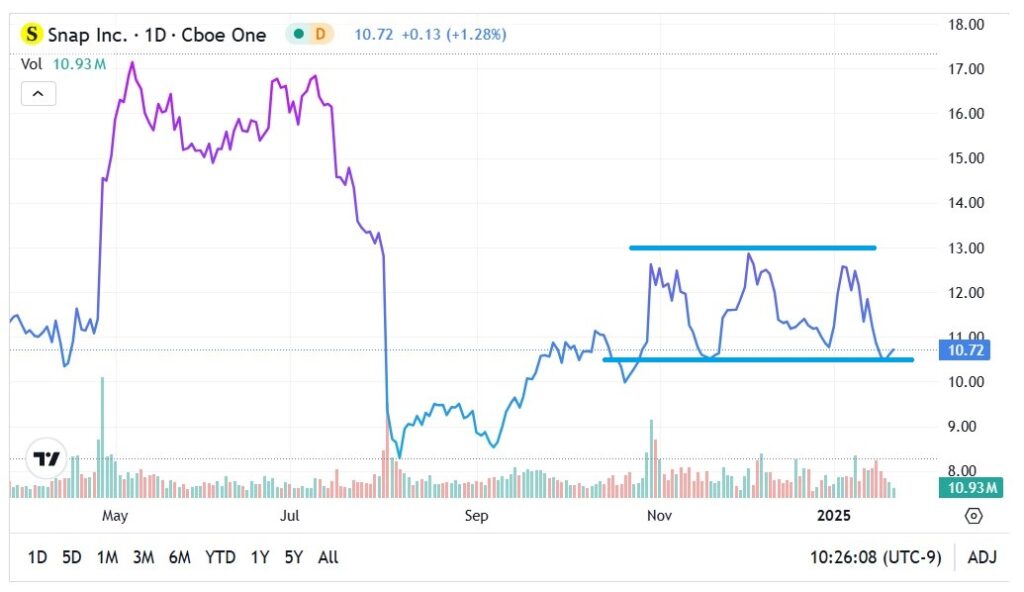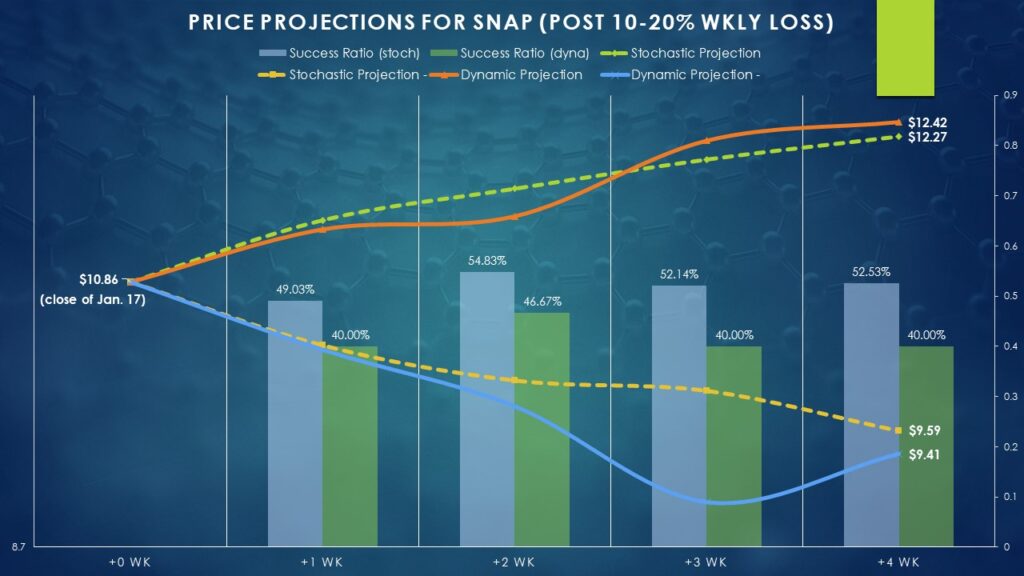Zinger Key Points
- Snap Inc theoretically should benefit from legal woes stymieing rival platform TikTok.
- However, market signals and behavioral trends indicate volatility risks for SNAP stock.
- Every week, our Whisper Index uncovers five overlooked stocks with big breakout potential. Get the latest picks today before they gain traction.
From a big picture perspective, Snap Inc SNAP would seemingly be a major beneficiary of the legal woes impacting rival video-sharing platform TikTok. Last week, the U.S. Supreme Court upheld a ruling that TikTok would be banned in the nation. The only offramp allowed was for ByteDance to divest the American portion of the business.
Given the unanimous decision and the direct language, Snap stock and other rival investments would seem to enjoy a reprieve. As the Supreme Court stated, "TikTok’s data collection practices and relationship with a foreign adversary" represent well-known concerns. In addition, the justices stated that First Amendment rights do not apply to this specific matter.
Cynically, TikTok's troubles offer a potential boon for Snap stock. According to an eMarketer analysis, TikTok generated $12.34 billion in U.S. advertising revenue last year. Should a ban stick, those billions could be redirected elsewhere. Arguably, Meta Platforms Inc. META stands to be the biggest beneficiary. However, Snap should also enjoy a noticeable uptick in demand.
To be sure, earlier this week, President Donald Trump issued an executive order to suspend the TikTok ban for 75 days. Despite the vote of confidence, the action hasn't stopped uncertainty over the platform's future, which has breathed some life into SNAP stock. Nevertheless, the market appears to be signaling deep skepticism over the stock.
Technical Resistance and Negative Biases Cloud SNAP Stock
Although Snap stock may initially appear as a discounted opportunity due to a rival's legal and geopolitical challenges, market behaviors imply that the enthusiasm could be short-lived. With the security seemingly unable to clear a critical price ceiling, the eventual trajectory could be negative.

Specifically, Snap stock appears to have printed a triple-top formation. Starting from the end of October to the early sessions of January, Snap has encountered heavy resistance at or very close to the $13 level. It's a bearish signal, indicating that despite the bulls' best efforts to break above resistance, they fail to marshal enough momentum. These unsuccessful attempts may see the target security fall below an established baseline.
Notably, Snap stock was holding support last summer at $13 before gapping down severely in August. That the triple-top pattern is forming at this level would seem to be an ominous sign, suggesting the bulls' inability to sustain credibility. Should an equitable agreement be reached regarding the TikTok ban, the platform's dominance could spell further pain for Snap's revenue streams.
Moreover, the statistical trends don't really favor upside for Snap stock. From a stochastic or temporal perspective, Snap stock on a weekly basis tends to have a neutral to upward bias. However, this favorable bias is punctured by short, severe bouts of volatility. Further, whenever Snap suffers a weekly loss between 10% to 20%, the behavioral bias becomes noticeably negative, with subsequent weekly performances printing positive returns less than half of the time.
Also Read: Meta Suspends Abortion Pill Accounts, ‘Delete Facebook’ Searches Near 5-Year Peak

That's significant because in the business week ending Jan. 17, the stock fell 11.27% and this week is also trending negatively overall. Therefore, under a dynamic lens, extreme fear tends to extract more skepticism. As a result, investors may need to approach Snap with caution.
Two Possible Approaches on Tap
For aggressive traders that want to take advantage of the potential skepticism against Snap stock, there are two interesting ideas available. First, speculators may consider a credit-based approach called the bear call spread.
Under this neutral to bearish strategy, the trader sells a call and simultaneously buys a call at a higher strike price (for the same expiration date). This credit spread starts from a cash inflow position; therefore, the trader is underwriting the risk that the security will not breach the short call (lower) strike price. Effectively, the long call caps the risk inherent in the short call, making this spread a defined-risk, defined-reward transaction.
One idea to consider is the 13.00/13.50 bear call spread (sell the $13 call, buy the $13.50 call) for the options chain expiring Feb. 7. At the time of writing, the trader would receive $8 while risking $42 should the trade go awry, thus presenting a yield of 19.05%. The idea here is that SNAP is unlikely to break above the $13 resistance barrier.
More aggressive traders may consider a debit-based strategy called the bear put spread. This transaction incurs a cash outflow to speculate that the target security will fall in value. Playing off the negative bias of Snap stock following extremely negative weekly performances, there's a risk that the bears could drive the equity down to the critical $10 level.
Recognizing this possibility, aggressive traders may consider the 10.50/10.00 bear put spread (buy the $10.50 put, sell the $10 put) for the options chain expiring Feb. 14. This trade anticipates pessimism against SNAP stock, with the bears eyeballing a key psychological target.
Read Next:
Photo: Shutterstock
© 2025 Benzinga.com. Benzinga does not provide investment advice. All rights reserved.
Trade confidently with insights and alerts from analyst ratings, free reports and breaking news that affects the stocks you care about.